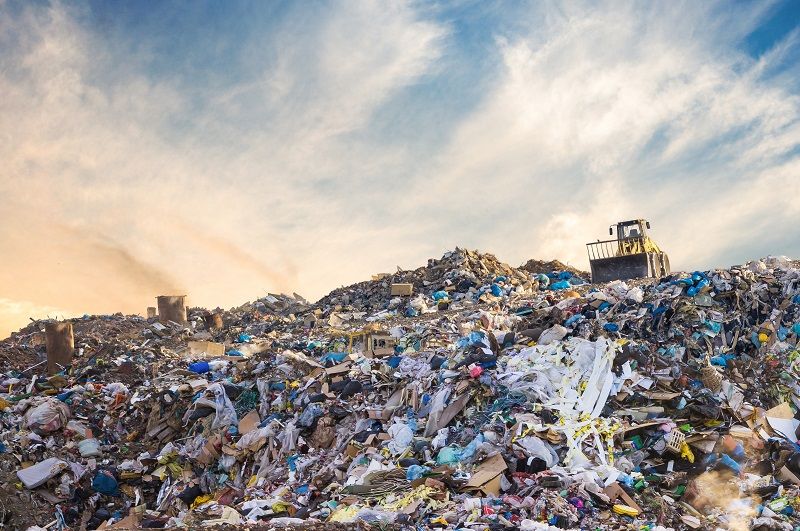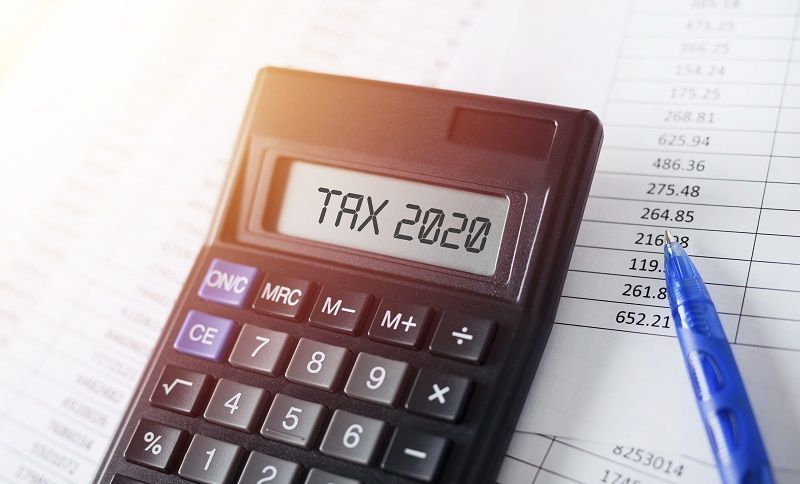Two years ago my family began making our own homemade diesel out of used fryer grease. Now we are watching with interest as the biodiesel movement gains momentum in the Pacific Northwest.
Seed crushing and biodiesel processing plants are opening or planned in multiple Northwest cities and bills to advance the alterative fuel have been hot items in state legislatures and Congress. Legislation has focused primarily on financial incentives and use mandates.
While well-intentioned, policy-makers are on the wrong track for promoting biodiesel. This fuel should be understood as a tremendous liberating opportunity. Biodiesel policy should reflect that theme by aggressively eliminating the governmentimposed barriers to its success.
History of biodiesel
Biodiesel is a form of diesel fuel made from vegetable oil or animal fat. It is both a very old and a relatively new solution. Rudolf Diesel designed his engine to run on a variety of vegetable oils and thought the technology would be a boon to American farmers. He unveiled his first diesel engine at the 1900 World Exhibition in Paris; it ran on peanut oil.
During the early 20th Century cheap petroleum fuels came to dominate the industry and the diesel engine was modified to run on this less viscous (thinner) fuel. However, through a chemical process called “transesterification,” vegetable oil can be made less viscous to run in any modern diesel engine without modification.
The process involves adding a methanol-lye or ethanol-lye solution to the oil to “crack” the triglyceride molecules, causing the oil to separate into two layers. Biodegradable glycerin (soap) sinks to the bottom; the remaining liquid, methel ester or ethel ester, is biodiesel.
Transesterification has been around since the late 1800s for making soap, but it took on new purpose during World War II when vehicles were powered with biofuels due to the disruption of oil supplies.
The modern interest in biodiesel dates to the oil crisis of the 1970s. Research began at the Austrian Federal Institute of Agricultural Engineering; the Council for Scientific and Industrial Research in Pretoria, South Africa; and the University of Idaho.1
Today, in compliance with the alternative fuel use standards of the Energy Policy Act (EPACT), government fleets across the United States run on biodiesel, with the Department of Defense being a major user. There are at least 35 active production facilities across the country and dozens proposed or under development.2
There is a large and growing population of backyard “homebrewers” and a thriving Internet presence for biodiesel.3 It does not take a scientist or sophisticated laboratory to produce the fuel. Automated biodiesel processor kits are now available on the market for a few thousand dollars, although many people spend only two or three hundred dollars to build their own crude, but functional, processors.
Biodiesel use
Biodiesel can be blended with petroleum diesel in any quantity and it is named according to the blend. B100 is pure biodiesel; B50 would be a 50 percent blend. B20 is the most popular blend due to the fact that it contains the minimum amount of biodiesel to meet alternative fuel designation under EPACT.
The performance of B100 is comparable to petroleum diesel in terms of power and mileage, and can be better.4 Engine life is enhanced due to biodiesel’s greater lubricating qualities and cooler burning temperatures compared to petroleum diesel.
Like petroleum diesel, biodiesel gels in cold temperatures, but it is dealt with in the same manner, through anti-gel additives or block heaters, for example. A well-known test project of biodiesel in Yellowstone National Park proves its ability to be used in extremely cold climates.5
Biodiesel reduces serious air pollutants such as particulates, carbon monoxide, sulfates and hydrocarbons.6 Although there is no decrease in carbon dioxide emissions, the plants that are grown to produce biodiesel effectively recycle those emissions, resulting in a net decrease. Nitrogen oxide emissions may not be reduced, but can be lowered through certain steps.7 The exhaust smell of vegetable oil is a considerable improvement over that of petroleum diesel.
Heating oil furnaces can also use biodiesel. Thus, it is a triple solution for fuel, electricity and heat.
The best kept secret of the 20th Century
When most people learn about biodiesel, their first reaction is, “Why haven’t I heard about this before?” That’s a very good question. It doesn’t take a conspiracy theorist to realize some parties stood to gain from petroleum over biodiesel. Today it is all the more true that biodiesel threatens many economic and political interests, so biodiesel policy should be examined critically to prevent the industry from being controlled.
The cat is now out of the bag as far as biodiesel is concerned. With big name stars like Willie Nelson jumping on the bandwagon, biodiesel is now squarely on America’s radar screen. But unless major policy changes are implemented, the industry will be hobbled compared to its real potential.
Obstacles
The retail cost of biodiesel can be upwards of $3.00 a gallon, while the cost for homemade production is closer to $.50 a gallon. The dramatic difference in cost points to several roadblocks for the industry. Chief among these are farm subsidies, but other issues that deserve attention are: retail sales regulations, taxes, methanol and ethanol regulations, and the availability of diesel engines.
Farm subsidies
Homebrewed biodiesel is typically produced on a small scale by individuals and cooperatives using used fryer grease from restaurants and bars. Currently the used oil is acquired at no cost because the businesses are happy to part with it; establishments must otherwise pay to have their oil rendered.
Retail biodiesel, on the other hand, is produced primarily from fresh oil. Canola and mustard seed oil have good potential as sources in the Pacific Northwest. Soybeans are used predominantly in the Midwest, and biodiesel has been promoted heavily in recent years by soy farmers. Oil palm and coconut are popular sources in more tropical climates. However, any kind of vegetable oil can be used. Animal fat can also be used for biodiesel.
There is very good potential in oil extracted from algae, which can grow in a wide variety of climates, with minimal land and water requirements, even growing in salinated water. Algae consume more carbon dioxide than other plants and could produce far more oil than many conventional oil crops.8
The cost difference between retail and homemade biodiesel is primarily due to the high cost of purchasing fresh oil. That is not to say it is too expensive to grow and extract oil crops. Rather, the cost reflects a limited supply. There has not been a great demand for farmers to grow oil crops and U.S. farm subsidies have altered the market, making it more lucrative to produce certain other crops or not to produce any crops at all.
So long as American farmers are paid not to cultivate land, the true cost of oil crop production can’t be known. The Conservation Reserve Program, which currently keeps 35 million acres out of production at an annual cost of $1.7 billion9, should be eliminated, followed by other federal and state farm subsidy programs, so that agricultural markets can reach their own natural equilibrium according to their value to consumers.
Federal farm subsidies total more than $19 billion annually.10 In comparison, the U.S. consumes about 60 billion gallons of diesel a year,11 which easily translates to a $150 billion a year industry. The vast new market for domestic fuel oil crops could more than make up for the income farmers currently receive through subsidies.
Farm subsidies are not only expensive for taxpayers, they’ve been shown to support a minority of farmers, especially large- scale operations.12 Certain farm support programs have been charged with resulting in overly-intensive cultivation and pesticide use.13 Moreover, as World Bank President Paul Wolfowitz recently acknowledged, subsidies give farmers from wealthier countries an unfair advantage on the world stage.14 Poorer nations are unable to compete, keeping them in poverty and giving many people cause to dislike the United States.
With the elimination of subsidies should come a thorough review and elimination of all counterproductive regulations that apply to agriculture. The current ban on industrial hemp should be lifted so that farmers have the full range of options for production of oil crops and other agricultural goods. USDA processing requirements and other regulations that limit the retail sales potential for small farm products should be rethought. Onerous reporting rules, such as a national farm animal identification system, should be avoided. Land use regulations that prevent farmers from residing on their land, doing value-added processing on site, or subdividing off a portion of their property so they can maintain or expand operations, should also be eliminated. Meanwhile, subsidies that reduce the costs of competing fuels should also be cut.
Retail sales regulations
At least some portion of the higher cost of retail biodiesel is due to the regulations governing sales. There is a good deal of confusion among small biodiesel producers and would-be producers on the exact regulations that apply to the sale of biodiesel.15
To sell biodiesel one must register with and regularly report to the Environmental Protection Agency or face fines of up to $25,000 a day.16 The EPA requires that biodiesel meet the American Society for Testing and Materials standards for biodiesel, ASTM D6751. It also requires that producers of “atypical fuels” pass “Tier 1” health safety testing, including testing the effects on lab animals when the fuel is burned in an engine.
Tier 1 testing is lengthy and expensive. Producers are allowed to join the National Biodiesel Board and take advantage of the Tier 1 testing that organization completed over the course of two and a half years, at a cost of more than $2 million. To access the Tier 1 test results, small producers must pay $2,500 to the NBB. The NBB is a membership-based nonprofit that developed out of the soy checkoff program. A sizeable portion of the funds that paid for Tier 1 testing came from soy checkoff dollars, so there is a good argument for the Tier 1 testing results to be public domain.
In any case, there is no logic in requiring further health safety testing. Biodiesel is well-accepted as a safe product, with far cleaner emissions than petroleum diesel. Biodiesel that meets ASTM D6751 standards has already been proven to pass Tier 1 testing. Membership in the NBB does not change that fact. Yet the testing requirement puts undo pressure on producers to join the NBB, giving that organization unfair advantage in setting biodiesel policy.
The ASTM standards themselves are supposed to ensure consistent quality. Consumers do not all need or want the same level of assurance, however. The owner of a 30-year-old farm truck might reasonably approach biodiesel very differently than the owner of a brand new vehicle.
It is not difficult for producers to determine whether a batch of biodiesel is safe for use. Either the oil separates cleanly and completely, or it doesn’t. A visual inspection, coupled with a simple specific gravity test in a low-cost hydrometer, provides fairly good quality assurance for many consumers. Producers can always detail their processing methods and voluntarily prove their compliance with ASTM standards as well.
A voluntary certification program would satisfy the needs of consumers who want extra quality assurance. Such a program already exists through the NBB, called BQ2000.17
But there should be nothing to stop a farmer from selling the excess biodiesel that he produces to his neighbor or community without government oversight. There are no legitimate health or safety reasons to require that biodiesel producers and retailers be registered with, and report to, the Environmental Protection Agency. These regulations were designed for high-polluting fuels and are not appropriate to biodiesel.
Unregulated sales and voluntary certification would ensure strong competition in the industry by allowing small-scale producers into the arena. The early adopters who are interested in trying their hand at homemade production would be able to defray some of their costs. With more people developing the technology and exploring entrepreneurial opportunities, a thriving and competitive biodiesel industry would result.
Taxes
The question of how or whether biodiesel will be taxed has not fully been answered in this country. Currently biodiesel is taxed at the same rate as petroleum diesel, although a federal tax credit exists for biodiesel use18 and there has been some discussion of reducing or eliminating taxes on it altogether.
Officially, biodiesel homebrewers are required to submit annual payment to the IRS for their fuel usage.19 In reality, homemade biodiesel is enjoyed tax-free. Many biodiesel enthusiasts see the fuel as an economically and politically liberating solution, and are not likely to pay extra money to the government if they can avoid it. Thus far, the issue has not been pressed through enforcement in this country.
Practically speaking, taxing homemade biodiesel is unenforceable. A farmer who produces oil for his farm equipment, generator and heating oil furnace, in addition to fuel for his road vehicles, could easily skirt tax laws.
Because biodiesel is so easily produced, a tax on the product could help spawn a thriving black market in the fuel, just as is seen in cigarettes. The cost difference between a pack of cigarettes from a high tax state like New York and a low tax state like North Carolina translates to enormous profit potential for smugglers. Crime rings could likewise form to capitalize on sales of black market biodiesel to consumers who are otherwise required to pay a tax.
The state and federal governments should not beat their collective heads against the wall over enforcing biodiesel taxes.
Other industry impacts
The success of biodiesel will also depend on the availability of affordable methanol or ethanol, and of course, diesel vehicles. These industries should be evaluated in light of the biodiesel opportunity and counterproductive regulations should be eliminated.
Methanol is typically used in biodiesel production because of its lower cost, and the fact that a smaller quantity of it is required in the transesterification process. Most methanol is derived from natural gas, although it is possible to make methanol from biomass sources such as wood. Ethanol shows good promise, however, because it can be made from cull grain, vegetables and fruit. Ethanol producers must obtain a fuel distiller’s permit from the Alcohol and Tax Bureau and are subject to inspection by the Bureau of Alcohol, Tobacco and Firearms. If one wishes to use or sell ethanol or methanol as a fuel or fuel additive other than as an ingredient in biodiesel, registration with, and reports to, the EPA are also required.
A major stumbling block for the success of biodiesel is the popularity of gasoline vehicles over diesel vehicles. International travelers might notice that many affordable, foreign-made diesel trucks and passenger vehicles are not available in the United States. American-made diesels are limited in variety and typically expensive. This does not indicate a free market in our diesel industry. One reason for this imbalance could be the fact that diesel has long been considered a dirtier fuel than gasoline, and has been treated as such in state and federal policies.
Diesels are likely to become even more unavailable in Western states if Oregon and Washington adopt California’s emission control standards. Several diesel models cannot be sold in California because they do not meet the emission criteria.20 These standards fail to acknowledge the fact that those same vehicles could be run on biodiesel, resulting in a net decrease in carbon dioxide emissions.
Instead of treating diesel like the scourge of the automotive industry, state and federal policy needs to catch up with the times and consider the diesel engine’s potential as an environmental and economic solution.
In Europe, where biodiesel use is far more widespread than in the United States, diesel sales have jumped in recent years. In 2000, 37 percent of all passenger cars sold in Europe were diesels, compared to only 19 percent a decade before.21
The danger of interventions
The lesson of each of the obstacles discussed above is that state and federal policy makers should avoid intervening in the field of technological development. Yoda’s warning should be kept at the forefront of our minds: “Difficult to see. Always in motion is future.”
The regulations, tax incentives and use mandates that seem to make sense based on today’s information may not make sense tomorrow. The world of technology changes at the speed of light, while laws are anything but adaptable.
How much more developed would diesel technology be and how much sooner would biodiesel have been embraced if diesels did not face a hostile climate in America? Would biodiesel be farther along without government incentives backing fuel cells, solar and other alternative avenues? Would B80 be the blend of choice if EPACT did not set B20 as the minimum federal standard for alternative fuel?
If the price of petroleum diesel increases as a result of proposed requirements for some amount of biodiesel to be blended into petroleum diesel, will fewer consumers choose to purchase diesel vehicles and miss the biodiesel opportunity altogether?
The problem of legislative unintended consequences is highlighted in the recent debate over canola rules in Oregon.22 Since 1990, the state has regulated canola production in an effort to prevent problems from cross-pollination. Now the canola rules are under review in light of biodiesel developments, but for 17 counties the Oregon Department of Agriculture still plans to ban canola for oil production except by state permit. The rules are designed to protect Oregon’s relatively small contingent of vegetable seed producers, however canola oil has the potential to command a far larger market in the state.
Regardless of intent, each law passed has the potential to stymie the biodiesel industry or other unforeseen industries as an unintended consequence. While biodiesel appears to be a clear solution today, it is possible that new techniques will develop in the biodiesel industry that may not be accommodated by the language of the tax incentives and mandates written into law. One Department of Energy report already acknowledges that there are other processes that can be used to produce high-quality diesel fuel from vegetable oil or animal fat that are not included in the federal definition of biodiesel.23
The liberating potential of biodiesel
Environmental solutions are commonly thought to cost more than the current technology, which is why state and federal governments are often asked to help these budding industries along. However, a good environmental solution is also an economic solution. There are ways to help the environment by spending more money, but these avenues distract from solutions that have truly great potential, like biodiesel.
The public policies currently promoted for advancing biodiesel are short-sighted. Their backers lack the vision for what this industry can achieve. Tax incentives and use mandates can prop up the industry enough for Americans to have widespread access to B20 at a subsidized cost of $2.50 a gallon or more at the pumps, but we should not be satisfied with that result.
If the retail market has to develop a little more slowly while more and more homebrewers learn to make biodiesel for $.50 a gallon, that might not be a bad thing. An army of informed advocates should demand nothing less than a low-cost, clean-burning, agriculturally-based fuel. The only way to achieve that reality is by taking down the very significant obstacles standing in the way.
Ending farm subsidies and eliminating fuel regulations and taxes are dramatic changes to consider in America today. Is biodiesel really worth these battles? The answer is “yes.”
There is a reason the terms “fuel” and “power” also have political application. Petroleum can’t be obtained by just anyone so it is ripe for control, and such control over our means of production and mobility has a devastating impact on our freedom. Biodiesel can literally put power into the hands of every American.
A vegetable oil-based fuel is both an economic windfall for farmers and a breath of fresh air for the environment. It also changes the entire playing field in American foreign policy. Without reliance on foreign oil, we no longer have the same interests in the Middle East. Biodiesel gives America the opportunity to repair relationships and win friends throughout the world.
Biodiesel policy should be based firmly in the philosophy of freedom. Given the history of petroleum politics, it is imperative that today’s policy decisions ensure a free market for biodiesel. Producers of all sizes must be free to compete in this industry, without farm subsidies, regulations and other interventions skewing the playing field.
To the extent that Oregon can or should advance biodiesel, it should identify and eliminate state-imposed barriers, and ask that Congress likewise clean house.
Rural Oregon Freedom Project photo: American Environmental Photographs Collection, AEP-ORS50, Department of Special Collections, University of Chicago Library.
Endnotes
1. Greg Paul, Biodiesel: Growing a new energy economy, Chelsea Green Publishing, 2004.
2. National Biodiesel Board, Current and Proposed Biodiesel Production Plants, April 2005.
3. For a quick tour of biodiesel online, visit www.biodieselamerica.org, www.biodieselnow.com, www.biodiesel.infopop.cc and www.journeytoforever.org/biofuel.html.
4. Clean Alternative Fuels: Biodiesel, U.S. Environmental Protection Agency, March 2002
5. Environmental and regulatory benefits derived from the Truck in the Park biodiesel emissions testing and demonstration in Yellowstone National Park, H.E. Haines and J. Evanoff, Bioenergy ’98 Conference of the U.S. Department of Energy Regional Bioenergy Program, Madison, Wisconsin, 1998.
6. A Comprehensive Analysis of Biodiesel Impacts on Exhaust Emissions, Draft Technical Report, Assessment and Standards Division, Office of Transportation and Air Quality, U.S. Environmental Protection Agency, October 2002.
7. For excerpts from various Nitrogen Oxide emissions studies, visit the Nitrous Oxide page of the Journey to Forever Biofuels site.
8. Joshua Tickell, From the Fryer to the Fuel Tank, Tickell Energy Consultants, Covington, Louisiana, 2000, pp. 53-55.
9. CRP Contract Summary and Statistics, United States Department of Agriculture, Farm Service Agency, June 2005 Monthly Summary.
10. See the Environmental Working Group’s Farm Subsidies Database for historical data.
11. Energy Information Administration, U.S. Department of Energy, Sales of Distillate Fuel Oil by Energy Use in the United States, 1999-2003.
12. The Environmental Working Group’s Farm Subsidy Database is at http://www.ewg.org/farm/. See also Farm Reform Reversal, Chris Edwards and Tad DeHaven, Cato Institute, March 2002.
13. Federal Agriculture Policy: A Harvest of Environmental Abuse, Jonathan Tolman, Competitive Enterprise Institute, August 1995.
14. “Farm subsidies an unfair deal,” Atlanta Journal-Constitution, July 3, 2005; “Wolfowitz calls for subsidy cuts,” BBC News, June 15, 2005.
15. “NBB and small producers,” Keith Addison, Sustainable Information Archive, message #27488, August 27, 2003.
16. Code of Federal Regulations, Title 40 Protection of Environment, Chapter 1 Environmental Protection Agency, Part 79 Registration of Fuels and Fuel Additives, (40 CFR Part 79). At least one unregistered producer has been shut down under such threat. “EPA thwarts Ashfield man’s efforts to sell cleaner diesel fuel,” Virginia Ray, Recorder Staff and Associated Press, Feb. 15, 2002. See also the company president’s statement.
17. BQ-9000 Quality Management Program.
18. See the Federal Biodiesel Legislation page of the Alternative Fuels Data Center, U.S. Department of Energy, or Internal Revenue Service Publication 378, Introductory Material.
19. 2004 Biodiesel Use and Handling Guidelines, U.S. Department of Energy, National Renewable Energy Laboratory, November 2004.
20. “Kulongoski tightens auto standards,” by Steve Law, Statesman Journal, August 30, 2005.
21. Green Consumers Guide, Toyota Diesel profile, Greenmedia Publishing Ltd., England.
22. “ODA adds local control to canola rules,” Mitch Lies, Capital Press, June 17, 2005.
23. Biodiesel Performance, Costs and Use, by Anthony Radich, Energy Information Administration, U.S. Department of Energy.
About Cascade Policy Institute: Founded in 1991, Cascade Policy Institute is Oregon’s premier policy research center. Cascade’s mission is to explore and promote public policy alternatives that foster individual liberty, personal responsibility and economic opportunity. To that end, the Institute publishes policy studies, provides public speakers, organizes community forums and sponsors educational programs. Cascade Policy Institute is a tax-exempt educational organization as defined under IRS code 501(c)(3). Cascade neither solicits nor accepts government funding, and is supported by individual, foundation and business contributions. Nothing appearing in this document is to be construed as necessarily representing the views of Cascade or its donors, or as an attempt to aid or hinder the passage of any bill before any legislative body. The views expressed herein are the author’s own. Copyright 2005 by Cascade Policy Institute. All rights reserved.











